Morphopsychology
Claude R. Rufenacht
The objective of morphopsychology is to establish the links between physical or morphologic appearance and characterological or psychologic particulars. “Facial shapes are a reflection of the life forces that are at work within each individual” (Corman). The study of the various facial forms as a concrete and harmonious reflection of the development of thought and spirit should be helpful in understanding the secret nature of these elements. This postulate is the basis for the development of the “science” of morphopsychology, an understanding of which represents one of the means of assessing the personality of our patients.
The human body is characterized by four basic anatomic elements, represented by the digestive, respiratory, nervous, and osteomuscular systems, which respond to four dominant instincts, which can be defined as an internal obligatory impulsion toward a concrete, specific objective.
1. The intuitive, material, and reproductive instincts, represented by the digestive and genital mechanisms.
2. The vital or thoracic instinct, which is the basis for breathing, developed and implemented by the respiratory system.
3. Psychic or cerebral instinct, on which reflection, thought, reason, and understanding are based, represented by the nervous system.
4. The motor or unifying instinct, which is the basis for actions and decisions according to the individual’s physiologic and intellectual capabilities and taste, represented by the osteomuscular system.
Segments
The human being appears in a trinity of forces combined within an individual unit because this entity has in itself a directional spirit, an animating life, and a body to execute (Fig 2-1).
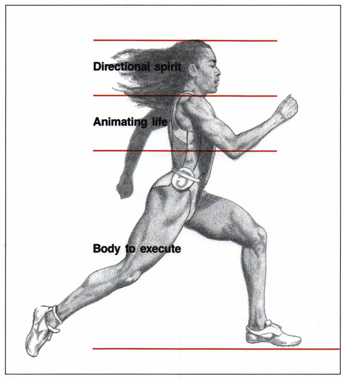
Fig 2-1 The individuality of the human unit appears in a trinity of segmental forces.
The trinity of forces is clearly inscribed within the human organism, which is composed of three segments: the head, which directs, the thorax, which vivifies, and the abdomen, which carries out the acts of nutrition.
The head itself is divided into three levels:
1. The upper level (intellectual or cerebral zone) from the upper part of the forehead to the root of the nose, which directs:
2. the middle level (emotional or sentimental zone) from the root to the base of the nose, which breathes and animates:
3. the lower level (instinctive or physical zone) from the base of the nose to the chin, which obeys and masticates (Fig 2-2).
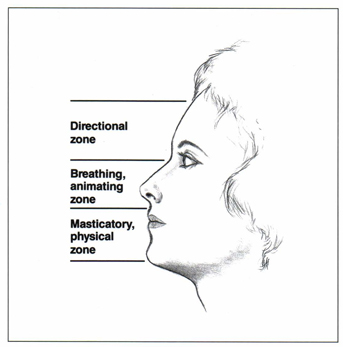
Fig 2-2 The head itself presents the same elements of segmental differentiation.
Factors of morphology and morphopsychologic appraisal
There are four means of appraising morphology:
1. Clinical, based on anatomic knowledge, linked to folds and volumes, the indispensable knowledge of which is acquired through our medical training.
2. Esthetics, which allows for an appreciation of harmony and beauty, or disfavor through the knowledge or perception of the esthetic parameters that have been described earlier.
3. Anthropometric, or body measurement techniques.
4. Biometric, or the methods for using and exploiting numerical factors, particularly with respect to the definition of biologic normality, which is the basis of modern orthodontics.
The study of forms is essentially based on observation and is aimed at distinguishing normal from abnormal forms or proportions of the body and face. In the field that is of interest to us, the main focus will be on the face with emphasis on the most obvious elements that mark an individual. One subject will be bony, the other muscular, and a third will be obese. Similarly, the manner in which the person moves, heavily, with alacrity, or decisiveness, can provide an indication of whether the person is an introvert or an extrovert. The distinctive particulars of the same anatomic elements determine the factors of morphologic appraisal designed to identify the fundamental types.
Hippocratic classification
According to Hippocrates, the father of typology, the Greek physician Gallien (131-201), and Dr Carton, four fundamental types of persons can be identified: the lymphatic, the sanguine, the nervous, and the bilious (Figs 2-3 to 2-6), each of which presents specific morphologic particulars.
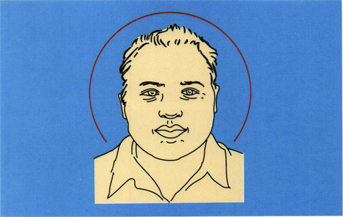
Fig 2-3 The lymphatic, heavy person, with a voluminous abdomen, thick members, and a full face. This individual is slow-moving, with a calm and placid character.
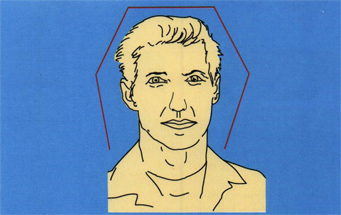
Fig 2-4 The sanguine, strong, and thick-set person has a well-developed thorax, a wide, ruddy complexion, spontaneous gestures, and an ebullient spirit.
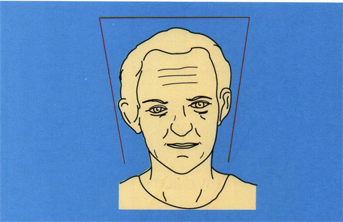
Fig 2-5 The nervous individual presents an elongated, pearlike head, with a wide superior extremity and an ample cerebral volume that contrasts with the others. The body is thin, with tegument of a grayish pallor and a thoughtful, anxious look.
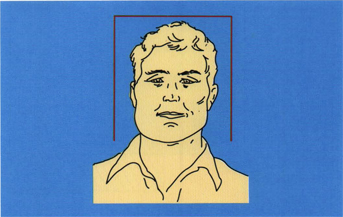
Fig 2-6 The bilious person has a rectangular face, straight eyebrows, an ardent and dominating look, and a firm, prominent musculature.
The nervous person scowls, the sanguine is agitated, the bilious acts, and the lymphatic does not move. Although this statement results from an evident will of simplification, it has been attributed to each fundamental type general traits of character behavior (Fig 2-7). However, the observation that an individual is far from presenting the specific morphologic particularities of a fundamental type fixes the limits of a strict application of these general traits. Judgment must be modulated, and interpretation should result from a correct evaluation of the mix and variety of accessory types existing within each human being.
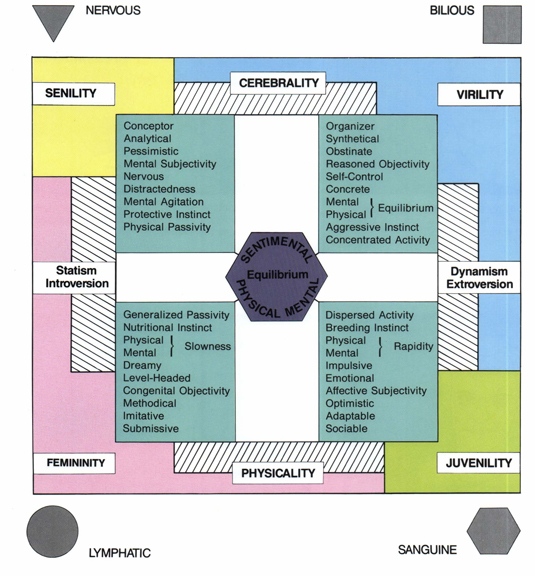
Fig 2-7 The characterial square enumerates general traits of behavior specific to the four fundamental types and underlines the connections and similarities that can exist among them. One must consider that each individual presents a tendency to blend with one of the fundamental types. However, it presents a mixture of secondary characteristics requiring proper evaluation and prudent judgment. (Suggested by “La Rose Caractérielle,” Morphopsychologie, Cours de Base, Institut Français de Culture Humaine, Paris, 1982.)
In considering the hierarchical origin of the fundamental types according to the chronology of their creation, it can be observed that a child starts living a lymphatic life through the placental roots, and at the moment of birth the respiratory life of the sanguine. The nervous system and thoughts slowly become animated, and the child ends up mastering its locomotion system by creeping and finally walking.
The same chronology can be stated in the different stages of development beginning with the lymphatic and abdominal in the first 15 months of life. One becomes predominantly sanguine through the growth of the thorax until the age of 7 years. The development of the cerebral zone occupies the stage until adolescence, characterized by the final sculpture of the osseous structure and muscular mass.
The Hippocratic classification offers the advantage of simplicity and appears as a necessary step for the introduction to morphopsychology. Even if more specific and precise classifications have been proposed and adopted since then (eg, animal or planetary typologies), it still remains an original basis and standard for all schools.
It must be recognized that although biologic evolution is fundamental to the laws of life, it depends on a number of factors that can deeply modify the basic formula, best ascertained by considerations drawn from the work of different authors that are part of modern morphopsy-chologic concepts.
Biodynamic conception of the personality
It is difficult to conceive of limiting the morphology of the body and the face, both in the study of humans and in the human’s “global beauty.” When one’s point of view remains static one is limited to the boundaries that are set, and the comparison among the various types of character is reduced to superficial parallels. To create a true synthesis of characterologies, a penetration in depth is required so that the physiologic forces may be understood in their nascent state.
Although there are certain inbred constitutive properties inscribed within each individual, the personality is in constant evolution and in permanent interaction with its environment (Fig 2-8). From this viewpoint, character traits should not be emphasized, but rather the profound tendencies that are the cause of such traits should be stressed. These psychologic forces are within the body, and all duality of body-spirit must be abandoned so that, while keeping in mind their close interdependence, a biodynamic conception of the personality as a whole may be substituted. This dynamist conception allows for the opportunities presented to each person to modify by the choice of environment, as well as through personal, intimate, daily effort, that which is inscribed in one’s morphology and psychism. “I was as you said I was, but I dominated my instincts and transformed myself” (Socrates).
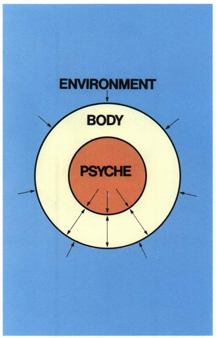
Fig 2-8 Morphologic analysis must be carried out, taking into account environmental influences pertaining to family, profession, climate, and subconscious psychosomatic pulsions. Morphologic appearances are the result of these two evolutive dynamic factors.
The components of the character according to this biodynamic conception are best summarized as follows:
1. Character is the whole person in all aspects, a synthesis of life and body.
2. Character is a synthesis of emotional life, will, and intelligence.
3. Character is not immutable. Aside from the acquired and the rejected, there is the environment. The difficulty lies in determining the constants and the variables.
4. A human being cannot be studied outside the environment in which he lives and by which he is influenced.
5. There is only a difference of degree and not of nature between normal and abnormal characters. The former contains the same fundamental elements but distributed evenly.
Laws of adaptation to the environment
The variety marking the development of human morphology has been interpreted by Corman as a sensitive and individual reaction to the environment. This reaction depends on the antagonism existing between two basic instincts that characterize the movements of life: the instinct of expansion and the instinct of preservation, the activities of which are placed under the influence of heredity and environment.
From the moment of birth, hereditary factors will generate in individuals subject to identical environmental conditions, reactions of dilatation or retraction. As a result, two distinct types can be observed: the dilated and the retracted (Fig 2-9).
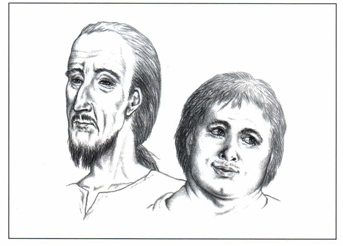
Fig 2-9 Don Quixote and Sancho Panza. According to Corman, the laws of adaptation to the environment have generated two types of person: the retracted and the dilated, best illustrated by these two individuals, made popular by literature. Pure retraction or dilatation rarely exists in the same person. Whereas Sancho Panza seems to behave at ease in any environmental condition and be receptive to life’s pleasures with some kind of passive attitude, the movement of retraction, which characterizes his withdrawn companion, seems to escape the influence of visual inputs. Long and sharp sensitive receptors indicate selected social activities.
Open-minded, optimistic, sensual, concrete, adaptable, and uninhibited individuals turn toward social contacts; the dilated type develops and radiates in the environment in a movement of dilatation that characterizes the instinct of expansion.
Conversely, the retracted, hypersensitive person, ready to detect dangers in cutting the roots that connect him with his environment, retires within himself in a movement of retraction. One has to consider that retraction should not be opposed to dilatation, as if one were dealing with two symmetric states. Retraction is not a static but an active process, turned toward interiorization and preservation. This type of personality is far more complex to understand because it contains the duality that enables behavior in a selected environment in a movement of expansion. Thus, according to circumstances, the retracted may be an extrovert or an introvert, efficient or indecisive, reasonable or impulsive.
The evaluation of the different elements of the morphopsychologic profile is directly proportional to the importance of the time dedicated to the patient, the sense of observation, and the degree of receptivity. Our level of knowledge and training may become totally worthless if our attention is focused on mastering technical problems.
Although a detailed analysis of the body cannot be considered here because the diversity of fashions, both of season and culture, often hides volume and proportion, the evaluation will be done on its most significant and important part — the face.
This introduction to morphopsychology, limited to general principles, selected concepts, and laws, states as a basic postulate that our facial frame, originating from our heredity, contains the potentialities necessary to its evolution.
Modeled from generation to generation, the facial framework, analyzed through the variety of typologic classifications, may reveal a number of general traits of character behavior and attest to the energetic possibilities of the individual. However, the variability exerted by vital forces not only determines the overall volume of the facial osseous framework but also the development in length of the different facial zones corresponding to life activities (Fig 2-10).
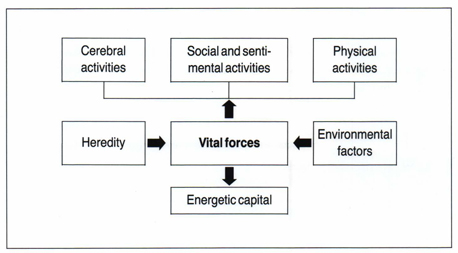
Fig 2-10 Schematic partition of vital forces.
Facial zones
The distinct significance of the three facial zones (Figs 2-11 and 2-12) has long been recognized by the public and used extensively by caricaturists. However, one must beware of simplistic conclusions because it is common sense that the level of intelligence, for example, cannot be measured by the development of the cerebral zone.
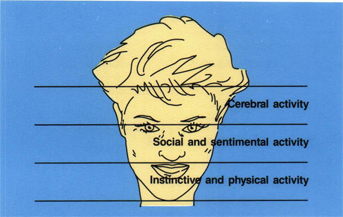
Fig 2-11 Segmental division of the face in three zones called facial zones. The dominance of one facial zone over the others indicates the preferential type of activity.
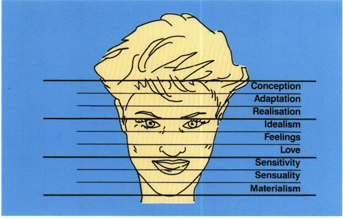
Fig 2-12 A facial zone may be divided into three parts: upper, middle, and lower (segmental division), each of which is related to the corresponding facial zone. The upper part of the lower facial zone, eg, represents the sensitive and reasoning element of the instinctive life.
The definition of a facial zone through its quantitative value is not justified unless it has been dictated by the qualitative appreciation of its dilatation or retraction and the tonicity and vitality of the sensitive receptors. The eyes, nose, and mouth occupy the stage of these different zones and determine their importance.
Equilibrium
The equilibrium existing between the facial zones must be determined and ascertained according to both their qualitative and quantitative value. This implies the elective use of the same elements of dominance, proportion, symmetry, and balance, which are required for esthetic perception and evaluation. Equilibrium still exists when a hierarchical dominance takes place in a zone of expansion that involves the active and nonconflicting participation of the two others. The subdivision of each facial zone into three parts and the presentation of the same elements of differentiation contribute to the understanding of this hierarchy and to a selective type of equilibrium.
Identical developments of the three facial zones engender morphopsychologic equilibrium and esthetic harmony. When a hierarchical dominance of selected facial levels takes place, esthetic harmony and morphopsychologic equilibrium still exist, most often enhanced by the nature of the dominance reflecting from the facial composition (Fig 2-13).
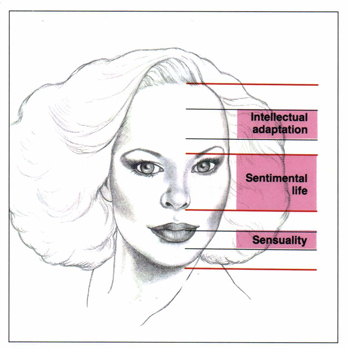
Fig 2-13 Morphopsychologic equilibrium. In this type of expansion of the median zone, reflecting the predominant influence of sentimentality, equilibrium can be obtained when feelings, helped by the intellect through the development of the adaptative factor, manifest themselves in the concrete sensuality of physical life.
This equilibrium can also be disturbed when the prevalence of one dominating zone overburdens the others quantitatively and qualitatively. As a result, the field of activities induced by vital forces is restricted to life activities reflecting from these zones (Fig 2-14). The dominance factor, the prime requisite for esthetic unity, requires the presence of subsequent elements. The particularities of these elements determine the character and the importance of the dominance factor. The predominance of a facial zone can be determined through the amplitude of its development, the opening and tonicity of its receptors, its reactivity to environmental influences, and the abundance of exchanges in the field of its preferential activities.
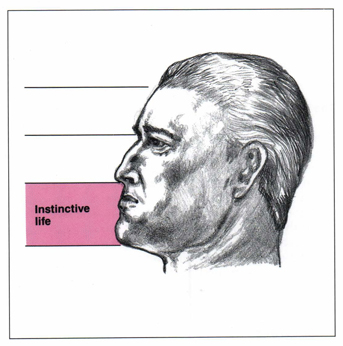
Fig 2-14 Morphopsychologic disequilibrium. In this overdevelopment of the mandibular zone, />
Stay updated, free dental videos. Join our Telegram channel

VIDEdental - Online dental courses


